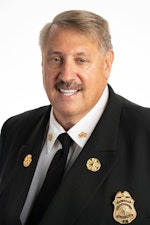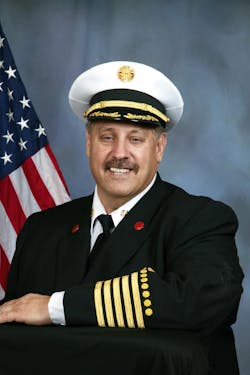Walk into any fire station where an ambulance is based, and it’s easy to see the priorities. If the engine is new, sparkling and looks like it just came off the showroom floor, and the ambulance looks like something that was just towed from the junkyard, you can probably predict how well the EMS program functions, is supported and is viewed within the department. With this in mind, let’s consider five signs that your department is failing at EMS.
1. Lack of leadership support
You walk into the fire chief’s office and there’s a framed sign behind his desk with the word “ProblEMS.” If the department leadership thinks EMS is nothing but problems, what kind of message does that send to the rest of the members of the department? The fire chief needs to be a champion for all divisions and operations within the fire department. This includes EMS, emergency management, hazmat, fire prevention, technical rescue and any other function performed by the department. To imply that EMS is a problem is an attitude that trickles down through the entire fire department, especially when the message comes from the fire chief.
2. Bad reputation
You’re assigned to the ambulance and the only worse spot in the eyes of everyone in the department is the rookie who is cleaning the bathroom. What’s even worse is, given the option to clean the bathroom or work on the ambulance, the rookie chooses to clean the bathroom. During the Civil War, the drunks and cowards were assigned to the ambulance corps, and the average time a wounded Union solider laid on the battlefield waiting to be taken back to a field hospital was three days. Realizing that the system was not working, they got rid of the drunks and the cowards in the ambulance corps and assigned professional soldiers to each ambulance with a sergeant in charge. By the end of the Civil War, the average time a Union solider laid on the battlefield was reduced to eight hours.
3. Fire suppression is king
At many departments, the fire suppression program gets all the latest and greatest toys, and whatever money is left over, if any, gets allocated to EMS. Proper budgeting should be done within all functions of the fire department based upon need. Every area of the fire department should be viewed as mission-critical. If one area does not get the resources it needs, it can drag the rest of the fire department down. I have always been confused when EMS accounts for 75–80 percent of a department’s call volume, but EMS does not get the necessary resources or financial support to help it meet these demands. Once, when hired as a consultant, I visited a fire department and was shocked to still see steel oxygen tanks being used by the department, even though aluminum tanks had been around for 20-plus years.
4. Pay problems
There’s a problem if you’re a firefighter/paramedic and your pay is the same as a firefighter with no paramedic license. A person who has put in the effort to obtain a paramedic license and has to deliver advanced life support care should be paid more than someone who does not have the same skill set. If you expect more out of your firefighters, it is only right you pay them for those expectations.
5. Staffing shortfall
Another reason your department might fail at EMS is because you do not have the proper support staff for the EMS operation, such as chiefs, supervisors, instructors and other support personnel. In fact, if you think a battalion chief who has no EMS background can manage just two more people because they are assigned to an ambulance, expect problems somewhere down the line when EMS issues crop up.
In sum
If your EMS operation is treated like an outcast, it is unreasonable to expect it to excel or to deliver excellent patient care with the latest and greatest equipment, protocols, training and quality improvement. It will just merely exist—that’s it!

Gary Ludwig
GARY LUDWIG has served in three fire departments over his career: St. Louis, Memphis, and Champaign, IL. His fire, EMS and rescue career spanned a total of 46 years, and he has been a paramedic for over 44 years. Ludwig served as president of the International Association of Fire Chiefs in 2019-20. He has a Master’s degree in Business and Management, has written over 500 articles for professional fire and EMS publications and is the author of seven books.
Connect with Gary
Email: [email protected]
Facebook: Gary Ludwig
Twitter: @ChiefGaryLudwig
Website: garyludwig.com






